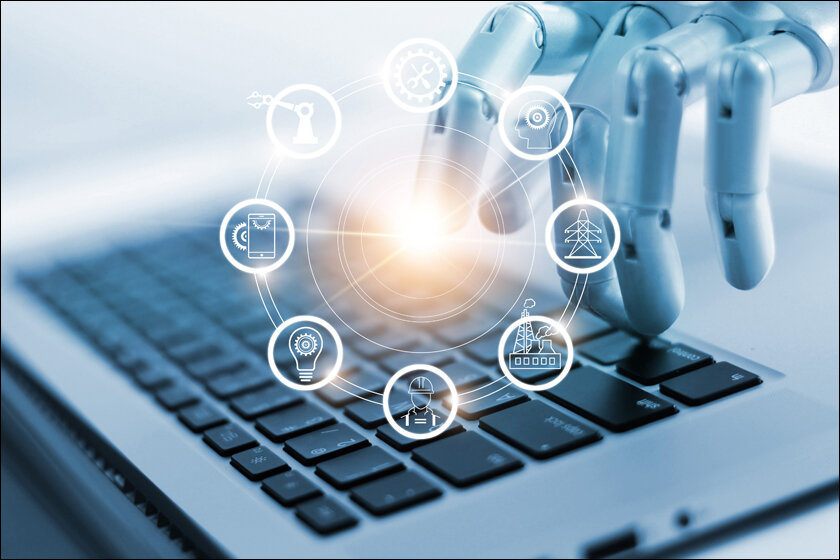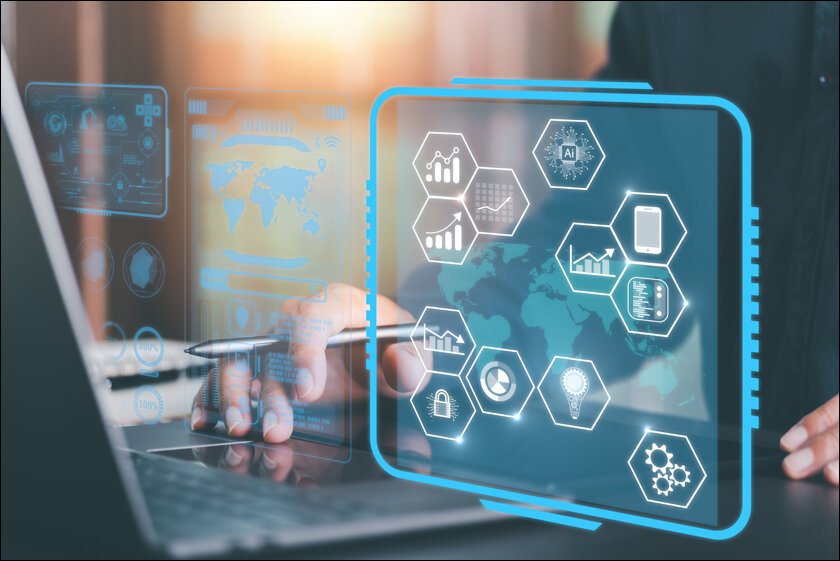With technological disruption, including advances in technology, automation, cloud, and AI, showing no signs of slowing down, digital transformation only continues to grow by leaps and bounds.
The term ‘digital transformation’ has been everywhere in the last few years. Basically, it’s integrating digital technology into every arena of a business, thus fundamentally transforming how it operates and delivers value to its customers. At its core, it’s also a cultural shift that requires companies to continually challenge the status quo, experimenting and getting comfortable with failure. With technological disruption, including advances in technology, automation, cloud, and AI, showing no signs of slowing down, digital transformation only continues to grow by leaps and bounds. In this write-up, we’ll be delving into the most important trends that shape digital transformation in 2024 while also exploring innovations that could shape the future of the landscape.

Machine learning and Artificial Intelligence
2024 will be year two of the widespread adoption of generative AI tools and technology. In fact, a recent IBM business survey surmised that 75% of business leaders say that advanced generative AI leads to competitive advantage. So, incorporating AI into digital transformation initiatives is one of the top trends for this year. While 2023 has seen companies expand their use of machine learning (ML) and increasingly experiment with generative AI, 2024 will also see efforts to scale AI across the enterprise.
It’s increasingly apparent that AI will streamline human activities and tasks rather than eliminate the workforce, thus helping both ends. Also, ML is poised to be a reckoning for data-driven companies looking to make their data analytics practices more efficient. For instance, generative AI prompt engines will dramatically decrease the time to develop ideas, create outlines, and draw up important information, thus improving efficiency. Meanwhile, applied ML will help improve real-time decision-making in supply chain-based organizations.

IoT Integration
While it’s always been disruptive, the proliferation of the Internet of Things (IoT) will further accelerate digital transformation efforts. A significant increase in the integration of IoT devices into the fabric will enable data exchange between physical objects and ensure seamless connectivity. That way, one can gather data on how the processes are running, allowing business processes to be optimised and introducing innovative services, thus making them more efficient. For example, global smart tracking systems in supply chain and logistics show where the products are at a specific moment during transit. Another example is manufacturers using IoT in factories to know when the machines need repairing, otherwise known as preventive maintenance.

5G Technology for Smart Cities
With the astonishing proliferation of 5G in almost every arena of life, it’s poised to transform how we look at smart cities. It allows a city’s infrastructure to collect data on everything that happens within its borders. Since all information will be accessible immediately and at an incredible speed, it’ll be possible to make quick real-time decisions, thus optimizing energy consumption, bettering public transportation, and lessening road congestion.
Let’s look at some examples of cities with 5G plans already underway. For instance, Tokyo uses real-time cameras and sensors, resulting in an advanced traffic management system. Another example is using 5G to determine energy usage and savings, as Berlin is doing. The German capital boasts energy-saving smart streetlights, which contribute significantly towards lessening energy consumption and thus promoting sustainability, creating a more efficient system.

Automation-driven Efficiency
Like ML and AI, automation is a huge driver of human productivity and will continue to be so in 2024. The process is all about developing working methods for lessening the time spent on tasks while achieving more with fewer resources and promoting efficient growth simultaneously. In fact, when businesses undergo digital transformations, they could uncover vast amounts of manual work that can and should be automated.
One example of automation is RPA (robotic process automation), which, according to a 2018 Deloitte report, was already deployed by 53% of firms worldwide. From order processing and inventory management to resolving issues, automation can and will continue transforming e-commerce activities and processes. In fact, even a 2022 Gartner report predicted that by 2024, businesses could decrease their operational expenses by 30% using hyper-automation.
Visual coding approaches for digital transformation are another automation method expected to trend in 2024, thus giving teams access to low-code or no-code development tools. While the former will help the DevOps teams by simplifying certain coding aspects, no-code approaches can introduce non-developers into the process. Thus, this shift makes development more accessible to non-technologists via user-friendly interfaces, having included everyone in building products and solutions.
While the digital transformation journey of every business will be different, there are many organizational approaches and emerging technologies that will have enormous impacts. Since conducting digital transformations takes valuable resources and time and is never truly over, businesses are best off approaching them, keeping these latest trends in mind to avoid unnecessary and costly adjustments further down the road. Finally, even though they require significant investment and change in how a company conducts its business and operations, the benefits far outweigh the costs when done correctly. And those that succeed at digital transformations will always stay ahead of the competition, driving better relationships with their vendors.
In case you missed:
- Enterprise Network Transformation: Benefits and Challenges
- AI and Networking Infrastructure – 2024 Trends
- Green Data Centres: Future-ready for Sustainable Digital Transformation
- Six ways hosted private cloud adds value to enterprise business
- Top cloud migration myths
- AI Firewalls and How They Protect Your Data
- AI-Powered Phishing: The Future Of Digital Fraud
- AI+ genomics – Revolutionizing the healthcare industry
- All About Attack Surface Management
- Guiding Light: How Photonics is Revolutionising Data Centres









